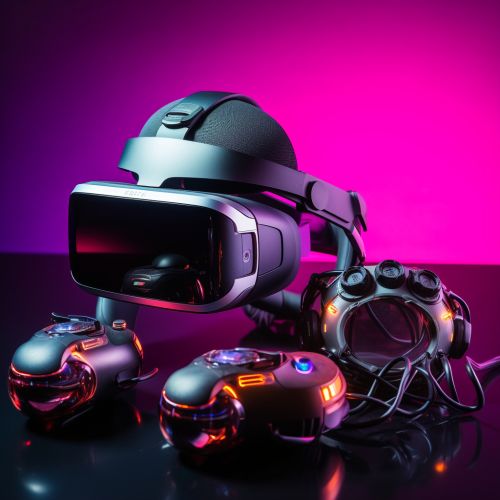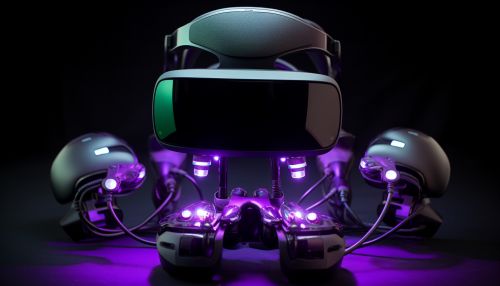Virtual Reality
Introduction
Virtual Reality (VR) is a simulated experience that can be similar to or completely different from the real world. Applications of virtual reality include entertainment (e.g. video games), education (e.g. medical or military training) and business (e.g. virtual meetings). Other distinct types of VR-style technology include augmented reality and mixed reality, sometimes referred to as extended reality or XR.
History
The concept of virtual reality was first introduced in the mid-20th century. The first functioning VR systems were built in the 1960s, with the development of the Sensorama machine and the head-mounted display. These early systems laid the groundwork for the sophisticated VR technologies available today.


Technology
Virtual reality technologies include VR headsets, omni-directional treadmills and special gloves. These are used to stimulate our senses together in order to create the illusion of reality. This is more difficult than it sounds, since our senses and brains are evolved to provide us with a finely synchronised and mediated experience.
Applications
Virtual reality has many applications in a variety of fields. These include:
- Entertainment: VR is most commonly used in video games, but it is also used in other forms of entertainment, such as virtual museums, virtual concert experiences, and virtual theme parks.
- Education and Training: VR can be used to provide immersive, realistic simulations for training purposes, such as flight simulation for pilots, and medical training for surgeons.
- Business: Companies are increasingly using VR for things like virtual conferences, remote collaboration, and product design.
- Healthcare: VR is used in therapy and rehabilitation, pain management, and in the treatment of phobias and PTSD.
Future of Virtual Reality
The future of virtual reality is being shaped by technological advancements and market demands. The increasing affordability and accessibility of VR technologies is expected to drive the adoption of VR in various sectors. Furthermore, advancements in AI and machine learning are expected to enhance the VR experience by making it more immersive and personalized.
